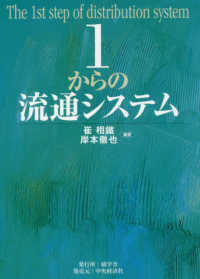Full Description
How a small town in New England became a home for jazz, challenging conventional assumptions about the relationship between culture and landscape, art and geography, town and city, and race and place.
This is a book about what happened in the 1950s in a barn, an icehouse, and a greenhouse in the verdant Berkshire Hills of western Massachusetts. Against the backdrop of McCarthyism, the civil rights movement, the expansion of the Afro-Caribbean diaspora, and postwar cultural tourism, two New Yorkers bought part of a sprawling estate in Lenox, where they converted an old barn and other outbuildings into an inn that could host musical performances and seminars. The Berkshire Music Barn went on to host jazz greats like Duke Ellington, Dave Brubeck, and Billie Holiday, as well as jazz roundtables grounded in folkloric approaches to the music.
The Jazz Barn explores the cultural significance of venues like the Berkshire Music Barn and later the Lenox School of Jazz to tell a surprising story about race, culture, and place. John Gennari explores how a predominantly white New England town became a haven for African American musicians, and reveals the Berkshires as an important incubator not just of American literature and classical music but also of the Modern Jazz Quartet and Ornette Coleman's "new thing." The Berkshire Music Barn became a crucial space for the mainstreaming of jazz. By the late 1950s, the School of Jazz was an epicenter of the genre's avant-garde.
Richly illustrated with the photographs of Clemens Kalischer among others, The Jazz Barn demonstrates that the locations where jazz is played and heard indelibly shape the music and its meanings.
Contents
Introduction: Jazz on the Hillside
Chapter One: The Town and the City
Chapter Two: Marshall Stearns, McCarthyism, and the Jazz Roundtables
Chapter Three: The Barn, the Eagle, and "The Negro Gentleman"
Chapter Four: Lenox and the Shape of Jazz to Come
Conclusion: The Place to Be
Notes
Bibliography
Index
Acknlowledgements
List of Illustrations






